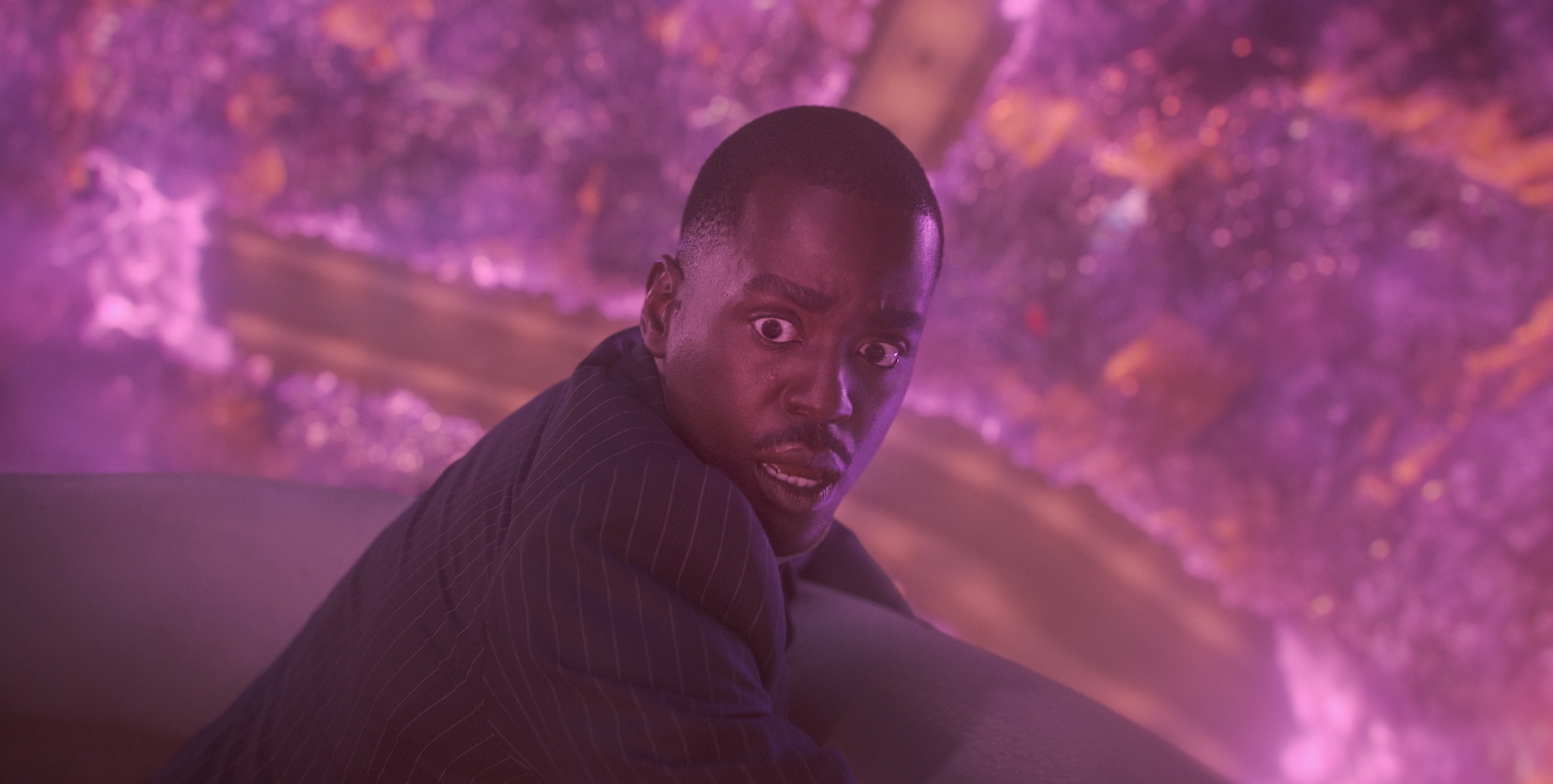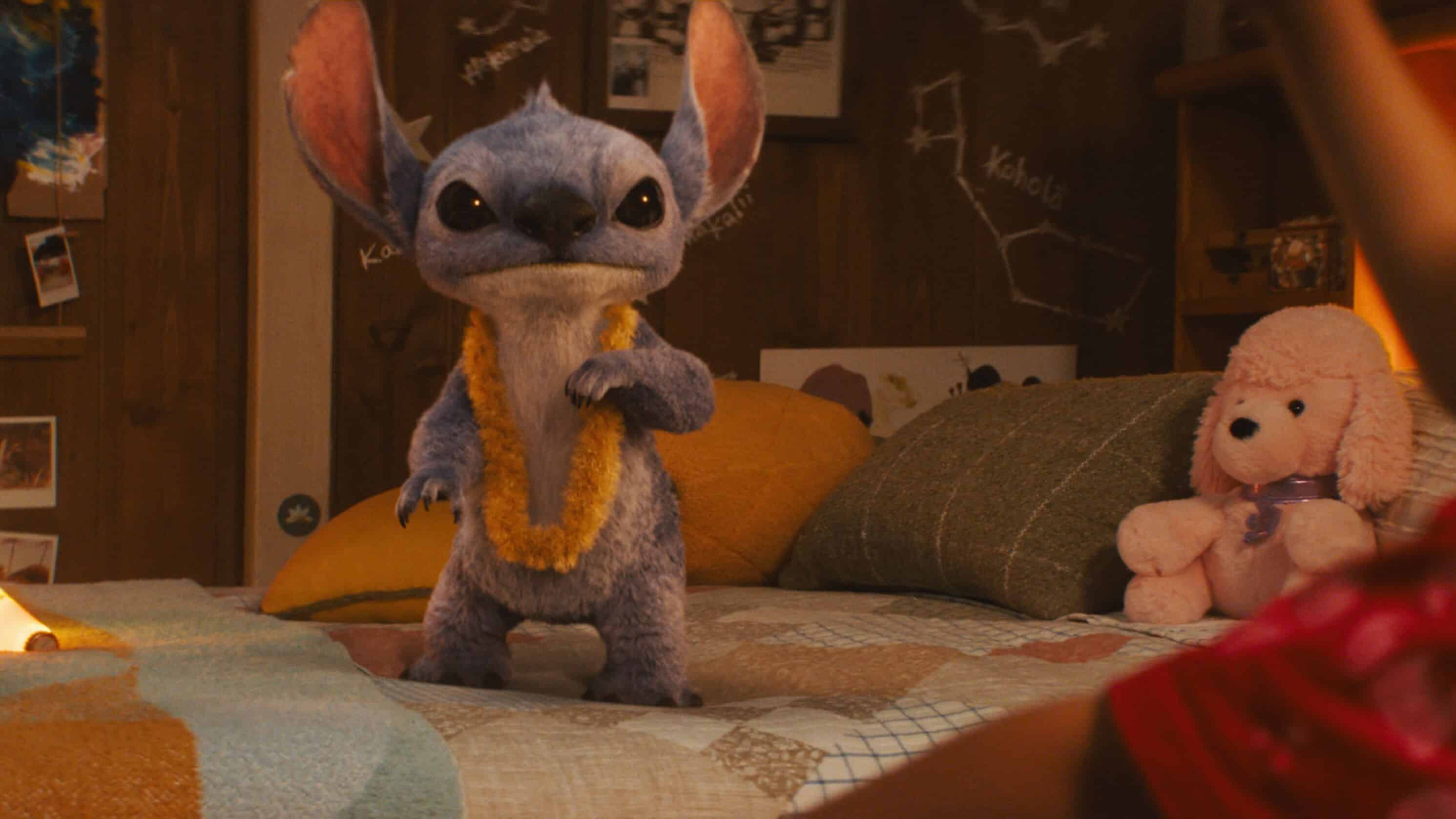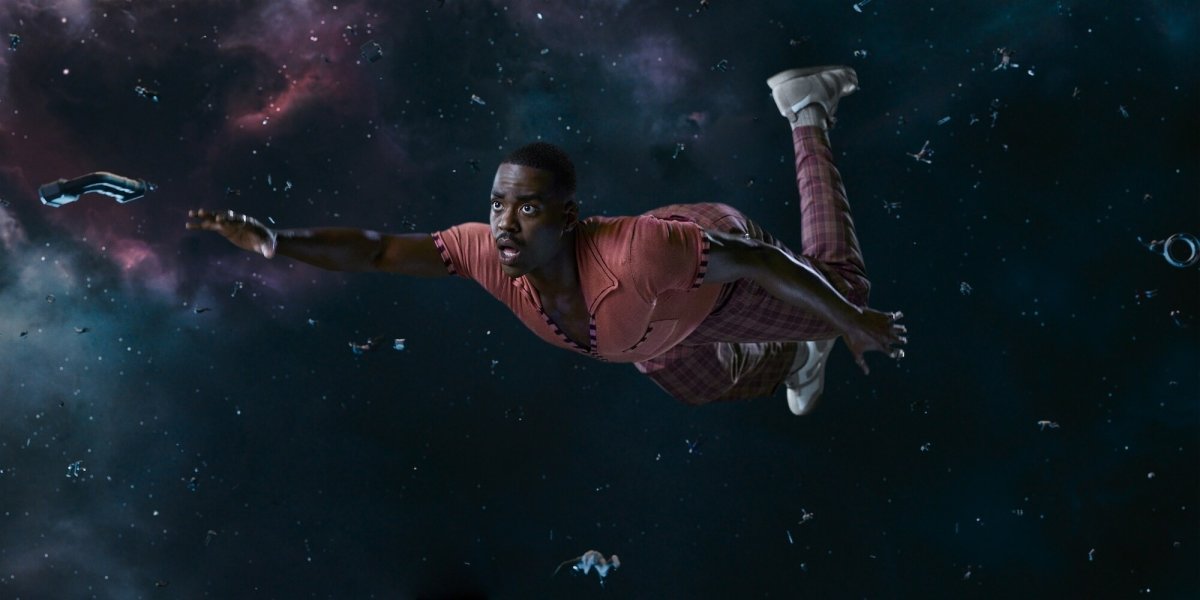Things are looking bleak for our merry mutants as Wolverine lies metal-less and bleeding and the Gold Team are captives of Bastion. The X-Men must regroup and find a way to fight the future (or just travel there) in the season finale of X-Men ’97, “Tolerance Is Extinction Part 3,” written by Beau DeMayo and Anthony Sellitti, and directed by Chase Conley.
To its credit, “Tolerance Is Extinction Part 3” is an improvement over the previous episode, and ends the season on a high note — even as it remains overstuffed and thematically muddled. It certainly helps that it’s a longer-than-normal episode, giving extra room for both the Magneto and Bastion conflicts to resolve, somewhat, before coming together and setting up the next season. As has become the norm, plot points are breezed past, character moments given short shrift. But on the whole, “Tolerance Is Extinction Part 3” finds the right balance, largely by letting its best action sequences be driven by characterization, and letting the pure spectacle of them smooth over the rough spots.
Somewhat surprisingly, the fallout from Magneto’s attack on Wolverine largely takes a backseat (Wolverine more or less spends the episode unconscious, looking distinctly less messy than he probably should be; so does Magneto, for that matter). Instead, the episode opens inside Magneto’s head, as Xavier uses a memory to try to reason Magneto into undoing … whatever he’s doing that is still keeping the power off back on Earth. This leads both to Xavier forcefully taking control of Magneto’s mind to undo what he’s done at the risk of destroying both their minds, and sets a template for the rest of the episode in terms of its handling of Magneto.

Meanwhile, on Earth, the Gold Team is in a pickle. Bastion and Sinister stand triumphant (thanks in part to the latter’s control over Cable). With Magneto’s interference over the Prime Sentinels gone thanks to Xavier, Bastion initiates the final phase of his plan: turning the Prime Sentinels on humanity and a cavalcade of superhero cameos alike, the old “kill them to save them from themselves” routine. In doing so, Bastion more or less destroys the insidiousness of his threat. The challenge of the Prime Sentinels as a physical manifestation of prejudice is “how do you punch prejudice when it’s not personified as a giant purple robot?” When Roberto and Jubilee were captured in “Tolerance Is Extinction Part 1,” it suggested a difficult challenge for the X-Men: How can they effectively fight back against this weaponized intolerance when it’s presented for all the world as entirely reasonable, nonviolent and helpful?
Here, Bastion (and, importantly, the show’s creators) give the X-Men an out. Bastion goes too far, revealing the ugly truth at the heart of his crusade. Now, the X-Men can fight back (metaphorically and literally) because Bastion and the Prime Sentinels have proven themselves a threat to everyone. To some extent, this can be forgiven, given the conventions of the genre. This is an animated action-adventure comic book adaptation, not a searing examination of the struggle against prejudice. But it would have been nice to see the series push a little further before falling back on the easy out.

From there, the episode shifts. Jean emerges as Phoenix (for … reasons. No time to delve into the mechanics of how this works!) and in a satisfying bit, single-handedly defeats Sinister and severs Bastion’s connection to the Prime Sentinels, shutting them down. But then Bastion severs Cable’s arm and uses it to transform himself into a Super Sentinel and flies off to send Asteroid M crashing into Earth. Technically, the ensuing fight between Bastion and the X-Men is easily on par with any of the series’ previous action sequences. But it’s all the more effective than, say, some of last episode’s action sequences because of how it’s tied to specific character beats. Rogue’s fierce pummeling of Bastion, punching him through the station and out onto the Blue Area of the Moon, is all the more engaging because it functions as an expression of her grief and rage over Gambit’s death. Cyclops going full blast against Bastion in defense of his family represents a continuation of his arc for the season. Magneto responding to Xavier’s efforts and waking up just in time to stop the crashing Asteroid M is all the more exciting because it represents a reclamation of Magneto’s power and identity.
Similarly, the ultimate resolution of the fight with Bastion — the X-Men calling off their attack and attempting to reach out a hand to him — doesn’t make a ton of logical sense, but works as the culmination of the collective journey the characters have been on throughout the season. This is Storm accepting her power, Xavier realizing his real purpose is to teach, the forgiveness of love Nightcrawler spoke about on Genosha. Choosing peace over violence, forgiveness over vengeance, is one of those things fiction — particularly fiction that exists in a heightened reality, like comic books — does well. In reality, it rings hollow, in part perhaps because deep down inside we’re less certain we could — or should — walk a similar path in the same situation. Yet once again, the series gives itself an out rather than deal with this tricky question. Bastion rejects the X-Men’s entreaties, but before they — or he — can deal with the consequences of that, the Magneto Protocols take the matter out of their hands.

It’s emblematic of the issue that, ultimately, holds the series back. At times — most of “Remember It,” the way Magneto’s speeches were sometimes framed — the series pushes itself into some less safe places, suggesting it was interested in probing some of the deeper and more problematic themes inside the X-Men narrative. This question of forgiving your enemy, of putting down arms (metaphorically) and reaching out a welcoming hand to someone who has already committed one genocide against you, is another such case. But ultimately, the series pulls back from these explorations, frustratingly if understandably returning to familiar patterns, quickly moving past the complications it’s raising in favor of another plot point from a beloved, older story.
It declares that Magneto was right, then has him kill thousands of people, then has him severely maim Wolverine, THEN spends a chunk of its finale bringing him back to the point of détente he was at before Genosha, without ever really stopping or even slowing down to interrogate any of those steps along the way. Here, at the end, the X-Men get to save the world from Bastion’s Prime Sentinels and notch a PR win rather than fight against them in the far more challenging court of public opinion. Humanity’s attack on Magneto allows Bastion to die rather than take the hand of the X-Men. The X-Men get scattered across time rather than deal with the aftermath of Bastion and Magneto’s dual attacks.
Most of this is, again, understandable, given the conventions of the genre. It’s frustrating only because of those moments when the series occasionally seemed on the precipice of pushing past those conventions, before ultimately surrendering to their pull. For what it is — a revamp of a cherished nostalgic favorite, a vehicle to get these characters into the wider zeitgeist again, a love letter to the stories and characters of a certain generation — the first season of X-Men ’97 succeeds. And “Tolerance Is Extinction Part 3” succeeds as a capstone to that season. It just would have been fun to see the show fulfill the promise of evolving into something more.
X-Traneous Facts
- The opening credits include a brief shot of Xavier and Magneto fighting together a la Uncanny X-Men #165, as well as Xavier telepathically peeking inside the Hellfire Club.
- The image of Xavier pulling himself up by Magneto’s cape and the pair rising into the air is lifted pretty directly from Uncanny X-Men #304. Similarly, the shot of Xavier as he takes control of Magneto’s mind comes from X-Men (vol. 2) #25 (though there, it accompanied Xavier wiping Magneto’s memory and inadvertently creating Onslaught).
- Storm’s laughter when Jean emerges as Phoenix is delightful.
- Bastion’s look after absorbing Cable’s arm and sprouting wings is taken from his final form in the 2010 crossover “Second Coming” (that crossover is also the one where Bastion kills Nightcrawler, making me very nervous during their portion of the fight on Asteroid M).
- The MCU (or the broader Marvel adaptation effort, at least) seems to have a thing for villains dropping a city from way high up to obliterate humanity.
- Another thing this episode didn’t really take the time to explore: I guess Rogue and Sunspot are fully back on Team Xavier now?
- Both Cyclops using his blast to move him around Bastion during their fight and Beast co-opting a Sentinel for his own purposes are callbacks to the series’ premiere.
- Seems like maybe Iron Man and Captain America and some of those other heroes the episode took pains to write in could have helped out when it seemed like Asteroid M was going to destroy Earth.
- Bastion declaring that humanity would rather die than have children like him and the X-Men is another one of those ideas it would have been fun to see explored further.
- Jubilee getting blown out of Asteroid M and Sunspot saving her (and thus, them not getting scattered through time) sure seems like a setup for a New Mutants/Generation X spinoff of some kind.
- Morph transforming into Jean and telling Wolverine they love him was confirmed by showrunner Beau DeMayo to have been a declaration of Morph’s own feelings and not just them telling Wolverine what they thought he’d want to hear.
- In the aftermath of “E-Day,” Graydon Creed (Sabretooth’s son who led the Friends of Humanity in the original series) is said to be running for president (something he did in the comics as well). A news report also mentions “Santo Marco,” which is the island nation Magneto invades and conquers in 1964’s X-Men #4.
- Forge’s board tracking the status of various mutants is reminiscent of the cover to the first chapter of “Days of Future Past.”
- The two time periods we see the X-Men in are ancient Egypt, in which they encounter a young Apocalypse resembling how he looked in the Rise of Apocalypse miniseries, and the far future, where Cyclops and Jean meet Mother Askani (who is actually their daughter from a different alternate timeline and voiced by Gates McFadden, aka Star Trek: The Next Generation‘s Doctor Beverly Crusher) and a younger-but-older-than-an-infant Cable, in a nod to The Adventures of Cyclops and Phoenix miniseries.
- The post-credits sequence involving Apocalypse exploring the rubble of Genosha is a reference to a mostly maligned Peter Milligan story from the 2000s in which Apocalypse transforms Gambit into his Horseman of Death and gives him lame poison gas powers.
- “Tolerance Is Extinction Part 3” is replete with cameos, including Silver Samurai (again, someone must like him), Iron Man looking like he does in his ‘90s cartoon, Daredevil, Doctor Strange (using the MCU’s depiction of his sorcerous abilities), Black Panther (who is later shown to be T’Chaka, T’Challa’s father), Cloak and Dagger, the Soviet Super-Soldiers and Omega Red, Northstar, Aurora, Puck, Psylocke, Scarlet Witch, Quicksilver, Polaris and Peter Parker and Mary Jane Watson (looking like they did in the ‘90s Spider-Man animated series).
Austin Gorton also reviews older issues of X-Men at the Real Gentlemen of Leisure website, co-hosts the A Very Special episode podcast, and likes Star Wars. He lives outside Minneapolis, where sometimes, it is not cold. Follow him @austingorton.bsky.social.






